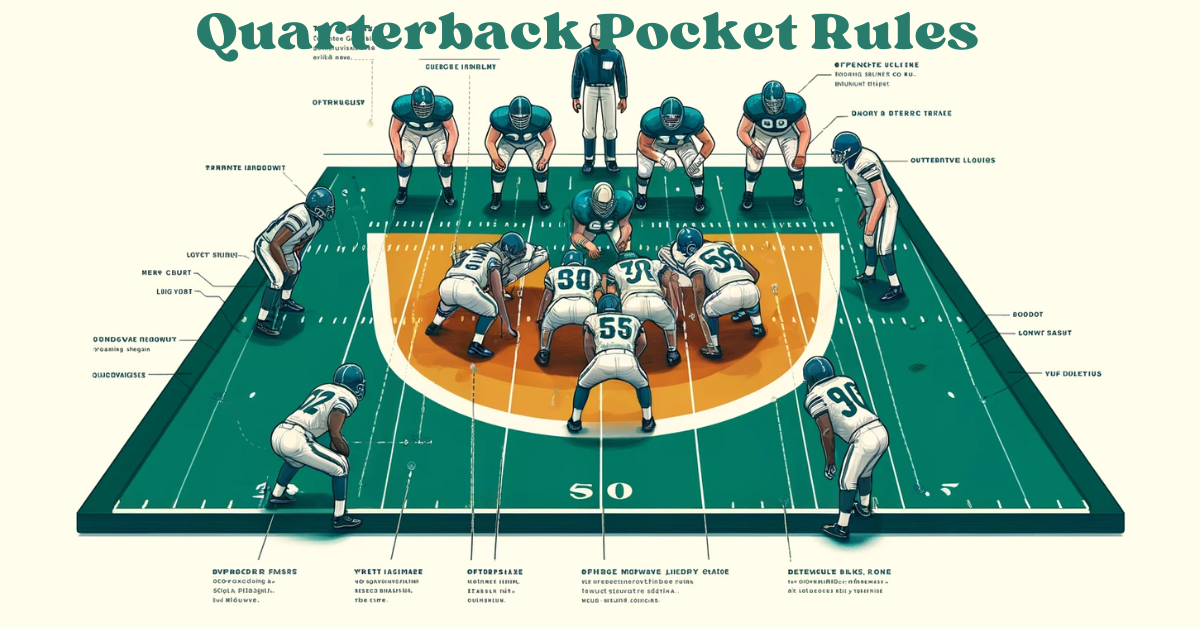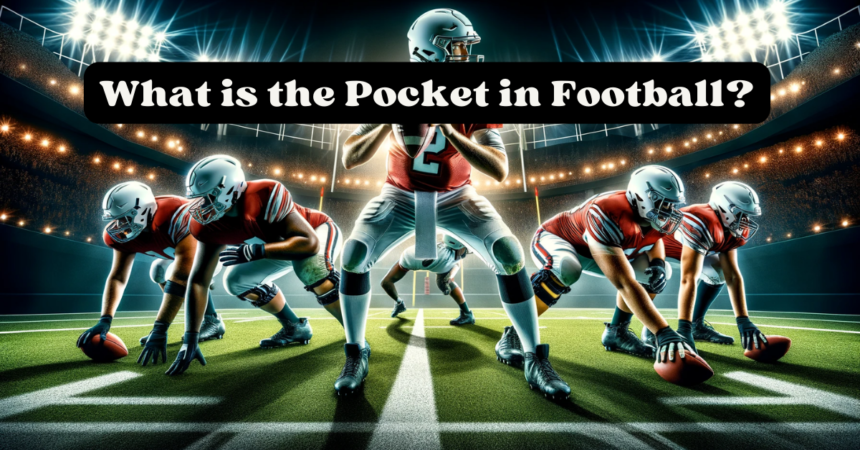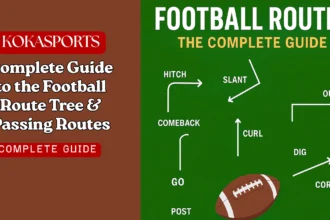In football, the “pocket” is a very important concept, especially when it comes to protecting the quarterback, the player who leads the offense.
Let’s explore what is the pocket in football and why it matters in the game!
What is the Pocket in Football?
The pocket in football is a safe space around the quarterback during a pass play. It’s made by the offensive linemen who block the defenders and give the quarterback time to throw the ball.
This space is usually shaped by two offensive tackles on the sides and the guards and center in the middle.
Where is the Pocket on a Football Field?
The pocket in football is right behind the line where the game starts, around the quarterback. The offensive linemen make it by stopping the defenders from getting to the quarterback.
The place of the pocket can change as the linemen adjust to what the defenders are doing.
How Do You Move the Pocket in Football?
Moving the pocket means the whole team of blockers and the quarterback shift to one side. This move helps them avoid defenders and keep their advantages.
It needs good teamwork and timing to keep the quarterback safe while they move.
What is Outside the Pocket in Football?
When a quarterback steps outside the pocket in football, they leave the safe area made by their blockers, usually to avoid being tackled or to see better for a throw.
This action changes how the play works and has special rules about when and how the quarterback can throw the ball.
How Big is the Pocket in Football and How is it Formed?
The pocket’s size can change but it is usually 4 to 6 yards wide and 2 to 3 yards deep. It depends on the play and plan.
The pocket starts to form when the game begins with a snap, and the blockers spread out in a curve to keep the defenders away.
Importance of Pocket Presence
Pocket presence is an important skill for a quarterback. It means the quarterback can sense danger, stay calm, and react properly while in the pocket.
A good quarterback knows when the pocket is failing and can avoid being tackled or safely get rid of the ball.
How Do Players Defend the Quarterback?
Offensive Linemen
The offensive linemen are the key protectors of the quarterback. Their main job is to block the defensive players and stop them from breaking into the pocket in football.
They use their strength and strategic positioning to keep the defenders at bay.
Running Backs and Tight Ends
Sometimes, other players like running backs or tight ends also help in protecting the quarterback.
They might block incoming defenders or act as additional barriers to anyone trying to get through the line.
Quarterback Pocket Rules

There are specific rules governing the quarterback’s actions within and outside the pocket, particularly concerning protections against hits and intentional grounding penalties.
Knowing these rules is essential for quarterbacks to avoid penalties and make smart plays.
Quarterback Footwork and Drop-Backs
Proper footwork and drop-backs are essential for quarterbacks to effectively operate within the pocket.
A quarterback’s drop-back refers to the steps they take backward from the line of scrimmage after receiving the snap.
Good footwork and drop-backs allow the quarterback to establish a solid base and maintain balance, enabling them to scan the field and make accurate throws.
Read Also: What is Edge in Football?
Pocket Presence
Pocket presence refers to a quarterback’s ability to sense pressure, navigate within the pocket, and make effective throws under pressure.
It combines spatial awareness, quick decision-making, and physical agility. Developing a good pocket presence is essential for a quarterback to excel in their role.
Identifying and Reacting to a Collapsing Pocket
Even with the best blocking, pockets can collapse due to defensive pressure or breakdowns in protection.
Quarterbacks must be able to quickly identify when the pocket is collapsing and react accordingly.
This might involve stepping up in the pocket, getting outside to avoid pressure, or throwing the ball away to avoid a sack or intentional grounding penalty.
Defensive Strategies to Collapse the Pocket
Defensive strategies to collapse the pocket involve coordinated blitzes and deploying skilled pass rushers to penetrate the offensive line.
By quickly overwhelming the pocket, defenders force the quarterback to make rushed decisions, potentially leading to sacks or turnovers.
This aggressive approach is crucial for shifting game momentum in favor of the defense.
Throwing Outside the Pocket in Football
/img
While staying within the pocket is ideal, there are times when a quarterback must get outside of the tackle box to make a play.
Throwing outside the pocket can be effective, but it also comes with increased risk and a smaller passing window.
Quarterbacks must be able to accurately throw on the run and avoid defensive players when operating outside the pocket.
Intentional Grounding and the Pocket Rules
Coaching Strategies for Developing Pocket Awareness
FAQs About the Pocket in Football
What does the pocket mean in football?
The pocket in football refers to the protective space around the quarterback created by the offensive line to allow time for passing plays.
How do you move the pocket in football?
Moving the pocket involves shifting the quarterback and the offensive line in unison to one side, evading defensive pressure.
Where is the pocket on a football field?
The pocket is located directly behind the line of scrimmage, centered around the quarterback’s position after the snap.
Where is the pocket in soccer?
In soccer, the term “pocket” is used differently, referring to spaces in the defense that players exploit to maintain possession or create offensive opportunities.
Key Points
Here are some simple key points about the pocket in football:
- Safe Zone for the Quarterback: The pocket is like a safe space on the football field where the quarterback stands to throw the ball. It’s shaped like a half-circle.
- Made by Linemen: This safe zone is created by the offensive linemen, who are big players that block defenders from reaching the quarterback.
- Protection is Key: The main job of the pocket is to protect the quarterback from being tackled by the other team.
- More Time to Think: When the pocket is strong, the quarterback has more time to look around and decide where to throw the football.
- Help from Others: Sometimes other players, like running backs or tight ends, also help protect the quarterback.
- Challenges: The pocket can break down if defenders push through or if the linemen don’t block well. Then, the quarterback must quickly decide what to do—like running or passing the ball quickly.
- Important for Winning: Keeping the quarterback safe and giving him time helps the team make good plays and win games.
In Conclusion
The pocket is a crucial part of football strategy. It’s not just about the physical space but also about the time it creates for the quarterback to make decisions.
Good protection of the quarterback can lead to successful plays and ultimately, to winning games.
Keeping the quarterback safe and giving him enough time to execute plays shows the importance of teamwork and strategy in football.



